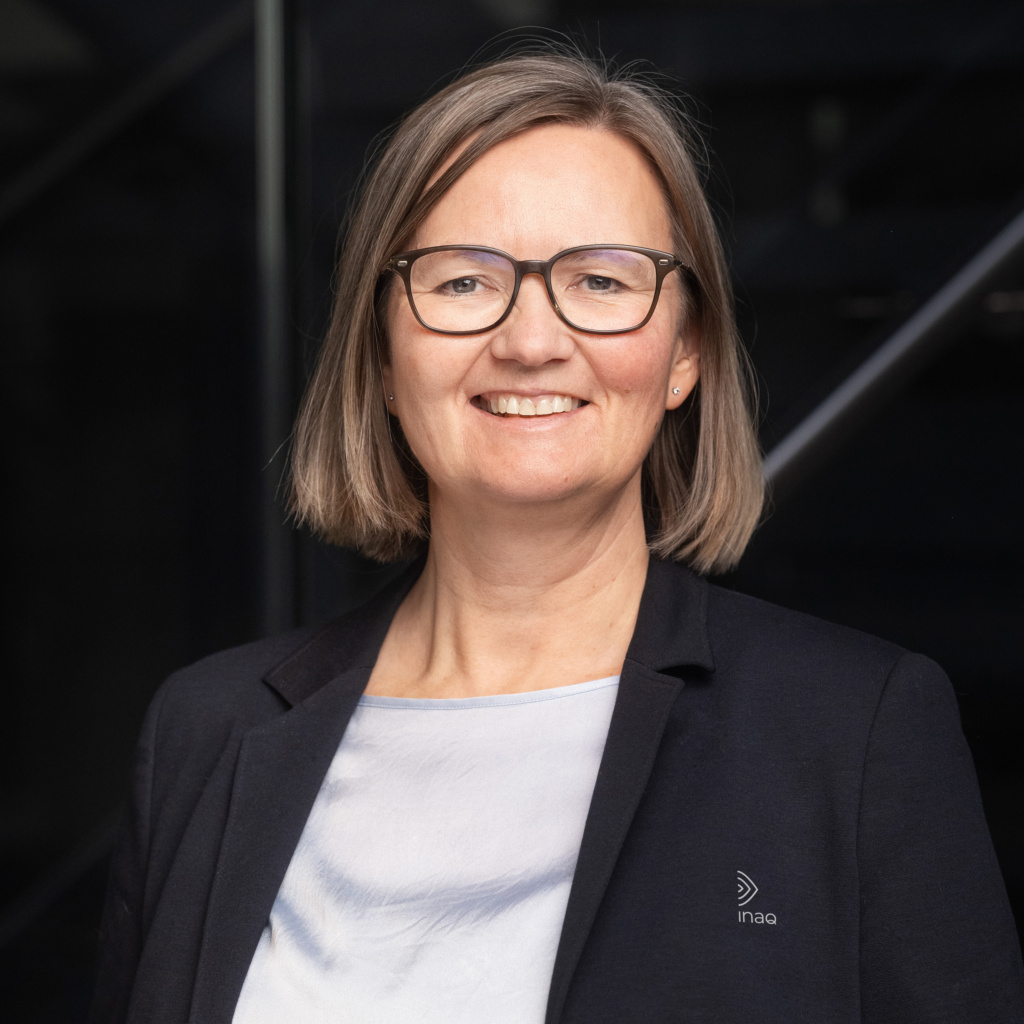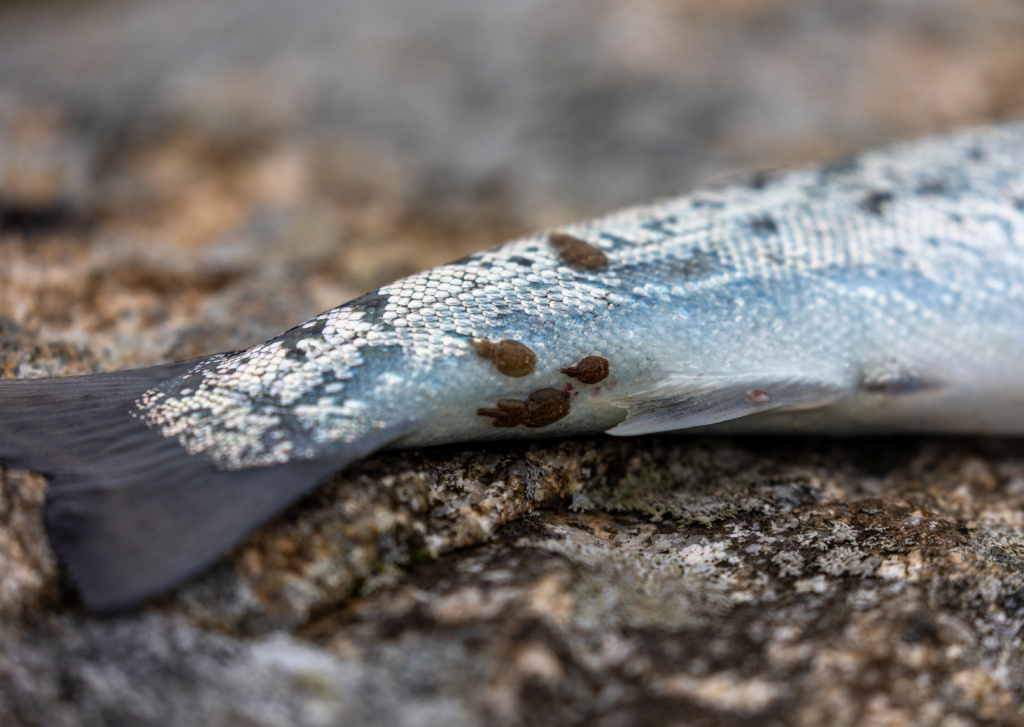This article was first published on intrafish.no on April 10th 2024
Millions are spent on research and development for lice control each year. Yet we cannot achieve adequate control over the lice, writes Nina Santi.
This comment was written the same week the Fish Health Report is presented by the Veterinary Institute. As a veterinarian and former fish farmer, I do not intend to stand by the complaints wall and lament that this is too poor and that we must do better. Instead, I want to challenge how we think about our biggest pest: sea lice.
Lice are and will remain the aquaculture industry’s biggest problem. They reduce growth due to repeated fasting before treatment, cause high mortality during treatment, and lead to wound issues after treatment. Additionally, there are drastically increased production costs and the looming threat of production cuts.

Millions are spent on research and development for lice control each year. Yet we cannot achieve adequate control over the lice. It is relevant to ask whether we are preventing early enough? Do we have the right focus in lice control, and is it possible to change the collective mentality about how we think about lice?
A Lice Factory
Here’s a warning to the good reader: What follows in the rest of this comment may seem obvious and banal. However, I believe it might be relevant to consider if, in the pursuit of new technology to combat lice, we are overlooking some simple facts that could help us move forward.
The most important realization for anyone producing salmon is the following: All the lice we struggle with, we have produced ourselves!
A fish farming site is a lice factory. In addition to producing salmon, lice are produced in abundance. The truly unfortunate part is that all the lice you produced this week will (literally) come back to bite you shortly. We must take responsibility for this and gain better control; it is obvious. Yet, how many fish farmers have this as their main KPI: lice production per week—or; rolling 12-month lice production? Or lice production as a KPI at all?
A fish farming site is a lice factory. In addition to producing salmon, lice are produced in abundance.
Today, the main lice target is the number of lice per fish at a given time, divided into various stages, according to the lice regulations. However, the number of lice per fish is just one of several factors in the crucial formula that gives the total lice production figure, at the facility, or for the company as a whole. In addition to the number of adult female lice per fish, we need the number of fish, information about sea temperature, salinity, and some basic assumptions about lice biology; number of eggs/egg strings, time between each pair of egg strings, and daily mortality for eggs and larvae.

Use the Formulas
The basic relationships forming the basis of the formula for lice production were published by researchers at the Institute of Marine Research in 2005 (Stien et al., 2005). Researchers at the Veterinary Institute, led by Kari Olli Helgesen, have used the same formula to illustrate the dynamics of lice production at a single site, for example, with increasing temperatures: An increase in sea temperature from 2 to 10 degrees results in a 170-fold increase in the production of infective larvae per female lice at a site. Compared to 2 degrees, lice production per adult female is 440 times higher at 15 degrees. Therefore, 0.5 adult female lice per fish means something entirely different for lice production in August than in February!
If one actively uses these formulas in one’s production monitoring, and, for example, creates graphics of one’s own lice production, these relationships become very clear, and it becomes evident when measures must be taken and which situations to avoid. Perhaps the conclusion is that it is wise to slaughter the site before the planned time, even though one could technically maintain the lice limit for a few more weeks. Or that treatment must be initiated even earlier than usual.
The Institute of Marine Research has developed a model to calculate lice production from fish farming sites along the coast, so they can assess the infection pressure wild salmon are exposed to (the sea lice map). The figures from the Institute of Marine Research’s model are part of the decision basis for the traffic light system. Again, it becomes somewhat banal, for the relationship is obvious; to prevent reductions, less lice must be produced!
Important Tools
Easier said than done, of course, but if we focus on reducing our own lice production, we can see new opportunities and evaluate the effectiveness of measures in a slightly different way. Site usage and production plans become important tools when planning for reduced lice production. It can be useful to review historical lice data and create graphs of one’s own lice production over several years. At some sites, there is a recurring pattern in how lice pressure develops throughout the year that can be exploited:
- At a site located in a fjord with a lot of brackish water through spring and early summer, there are good opportunities to keep lice numbers down throughout the summer. This can be a good site for autumn stocking if one succeeds in producing the fish until slaughter before lice numbers build up towards autumn. In this way, the biomass is taken out before lice production increases.
- A site that has recurring problems with high lice numbers in the middle of summer may be better suited for spring stocking. The first summer after stocking, it is often easier to handle lice pressure, while one should avoid taking the fish through a second summer and rather slaughter it in early summer.
Thoughtful site usage, with smolt of the right size, stocked at the right time, can alone contribute significantly to reducing lice production.
The thinking underlying the above examples may not fit into the established zone structure in the various production areas. However, if one focuses on reducing lice production, one might reconsider some of these zones. Although they initially contribute to a good fallowing structure and low lice levels at the start, lice production in some of the larger zones can become massive as the salmon approach slaughter weight.
Thoughtful site usage, with smolt of the right size, stocked at the right time, can alone contribute significantly to reducing lice production. Measures that directly reduce the number of adult female lice are also crucial to keeping lice reproduction in check. A greater focus on reducing one’s own lice production can make it easier to measure and value the work that cleaner fish do in removing gravid female lice. The same applies to other technologies with the same function.
«Tipping point»
If one succeeds in reducing their lice production, it can still feel like a futile battle when new lice infestations come in from neighboring sites if they have not been as effective in their lice control. However, in the fight against lice, there is hope of avoiding the tragedy of the commons. If one succeeds over time, one can reach a «tipping point» where a negative spiral of increasing lice production reverses into the opposite; a positive spiral where decreasing lice production actually results in fewer and fewer lice to manage. I have experienced that this is possible in confined areas that previously had significant lice challenges. For this to happen on a larger scale, more must adopt reduced lice production as their primary KPI.
PS. Just to be clear; it is only lice production, not salmon production, that should be reduced.